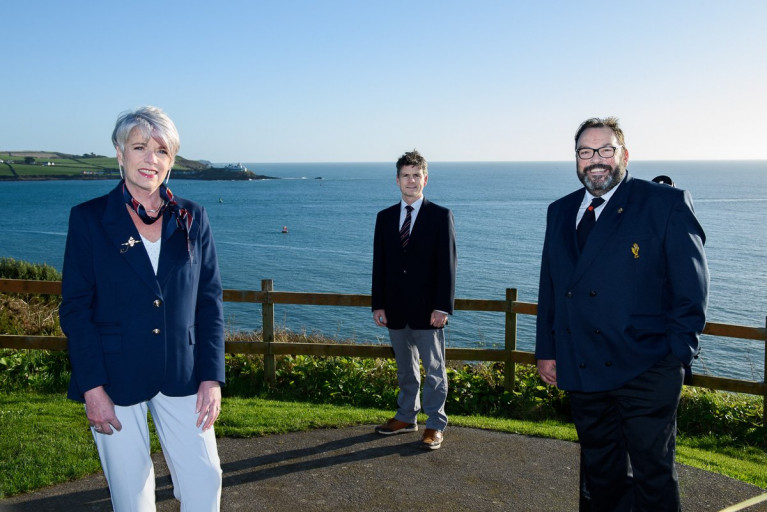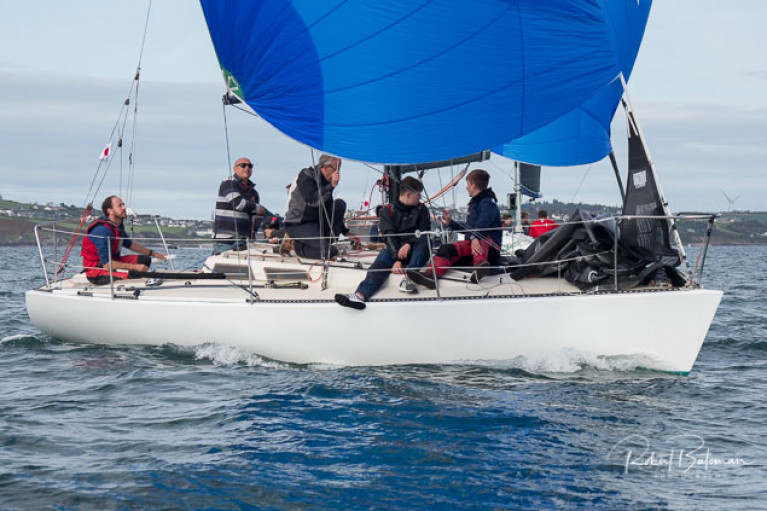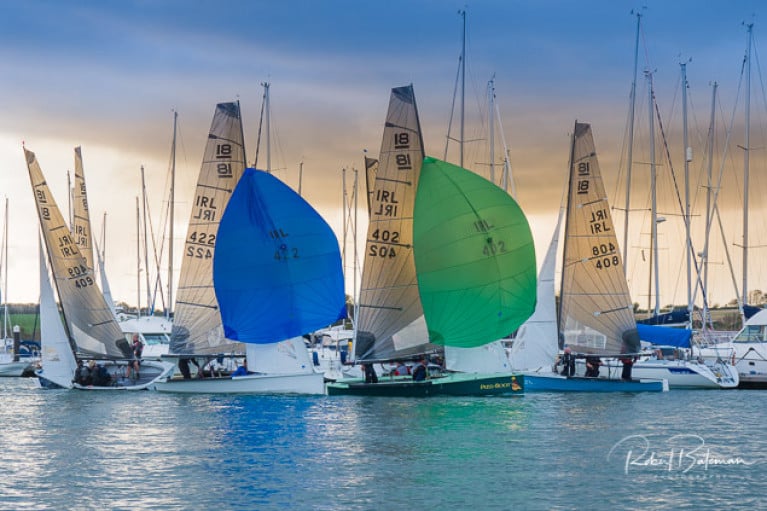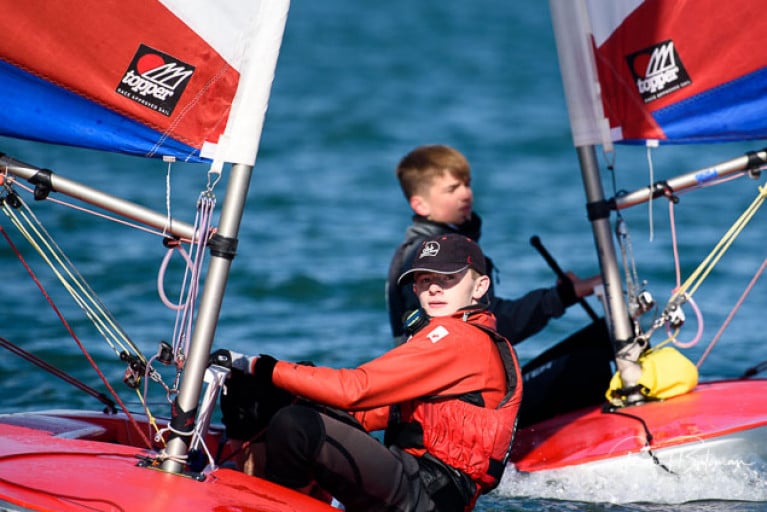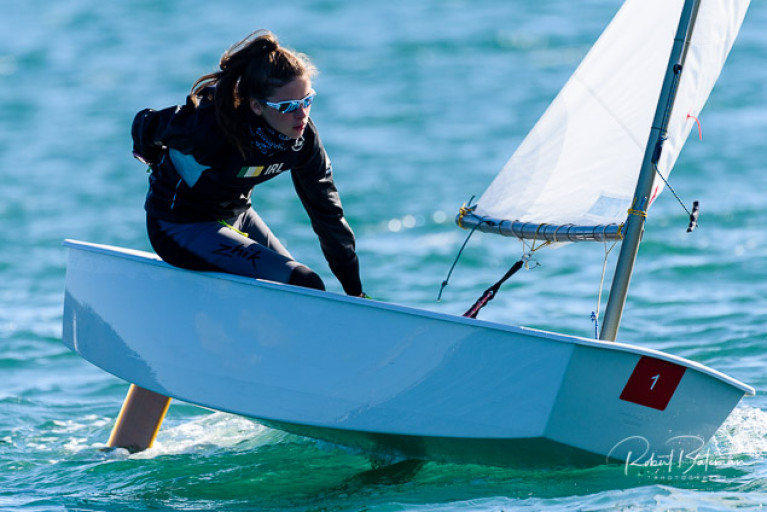Displaying items by tag: Royal Cork Yacht Club
Royal Cork Yacht Club Seek Instructor Applications for Summer 2021
Royal Cork Yacht Club seek applications for instructor, senior instructor and coaching positions with the Cork Harbour club for 2021.
The club says there is a 'significant' opportunity for employment throughout the year with Try Sailing, Cadet Club, Junior Sailing Academy, Sailing Courses, Adult Sailing, Women On The Water and of course regular fleet coaching, all of which is dependent on COVID-19 restrictions.
The closing date for submissions is January 22nd 2021.
More on this link here
Annamarie Fegan and Ross Deasy will co-chair Cork Week 2022, Royal Cork Yacht Club has announced.
Deasy who has raced as part of many RCYC keelboat campaigns in the last 25 years, including a Commodore’s Cup win onboard Antix, will chair Cork Week's racing committee. Fegan who has been campaigning the family Grand Soleil ’40 both inshore and offshore in recent years, including a win in this year’s inaugural Fastnet 450 Race, will chair the shore-side events.
As Afloat previously reported, the date has been set for Cork Week 2022 from Monday, July 11th to Friday, July 15th 2022.
With Volvo Cork Week 2020 having been cancelled as a result of the global pandemic, RCYC is extending its Tricentenary celebrations with a number of significant events in the coming years, including Cork Week 2022.
The 300th anniversary of the oldest yacht club in the world is a momentous occasion and the Royal Cork welcomes members, guests and visitors to join them for world-class racing and shore-side entertainment.
Cork Week organisers have committed to publishing an advanced notice of race by Easter 2021, thus giving boat owners and captains plenty of time to make plans to attend this very special event in Cork which organisers hope will achieve the 300+ boats expected for Volvo Cork Week 2022.
Honorary life member and former Admiral of the Royal Cork, Anthony O’Leary, joins the committee as an advisor for 2022.
The committee will be supported by Alex Barry in communications, General Manager of the Royal Cork, Gavin Deane, and Rear Admiral of Keelboat racing in the Royal Cork, Daragh Connolly.
The highlight of Royal Cork Yacht Club's junior sailing laying up supper conducted by Zoom at the weekend was the presentation of the Club's Pyewacket Trophy to the junior sailor who best represented the RCYC in 2020.
Ben O’Shaughnessy was awarded the top prize for his strong performance and second place overall in the AIB Optimist Nationals sailed on his home waters of Cork Harbour.
The trophy was originally presented by Roy Disney who was a long term member of the Royal Cork who donated a generous bursary to junior sailing in the Crosshaven club.
More on the laying up supper that attracted a turnout of over 150 sailors online here
Royal Cork Yacht Club to Host 2021 Topper Worlds in Cork Harbour
The 2021 International Topper World Championships will be hosted by the Royal Cork Yacht Club, Ireland, from the 24th to 30th July.
As Afloat reported previously, the event will attract up to 200 young sailors from around the world and it has been planned to dovetail with the UK National Championships, following on two days later at Ballyholme YC in Northern Ireland, from the 2nd to 6th August – providing sailors with a fun, fortnight festival of top-quality racing.
The club and ITCA are currently finalising plans for the event and will, of course, be closely monitoring the situation regarding COVID-19.
Entry will open January 1st 2021.
Cork Harbour Sailing venue
Cork Harbour is a natural harbour, with stunning scenery and provides a perfect location for any sailing championship. Claimed to be the second biggest in the world after Sydney Harbour, it has room for two protected races areas within the harbour and a further three out in the bay.
Despite a year of "cancellations and disappointments" there have been more people sailing this Summer in Cork Harbour, with families racing together, more young sailors taking to cruisers and a growth of interest in dinghy sailing.
That is the positive, optimistic view taken at the Royal Cork Yacht Club in Crosshaven where, though the Autumn Cruiser League Series has been stopped, there is still hope for the November/December Winter League, if restrictions allow.
Some owners have had their boats hauled, particularly from mooring, lest a total shutdown leave them stuck out there for the Winter. Others have taken the opportunity to haul and do some work on their craft with the intention of going back into the water should the Winter League go ahead.
It has been a tough season, a bad one in many aspects, with a severe 'hit' of cancellations of the planned celebrations of its 300-year history at the oldest yacht club in the world. However, the Rear Admiral in charge of keelboat racing at the RCYC sees "positives" for sailing and that is a view that is needed amidst the grim effects of the pandemic.
Hope is needed and Darragh Connolly brings a hopeful approach in my Podcast this week.
 Darragh Connolly, Rear Admiral (Keelboats) of the Royal Cork Yacht Club Photo: Bob Bateman
Darragh Connolly, Rear Admiral (Keelboats) of the Royal Cork Yacht Club Photo: Bob Bateman
Though having had to cancel the very popular Autumn October league series, there has been a degree of growth in the sport he says and he is hopeful this will continue into next year and 2022.
"Absolutely disappointed, for the sailors, for the clubs, but it was a decision we had no option about. Our year has been one of cancellation with so much disappointment, but we put a focus on club racing which became very important and we concentrated on that. While this has not been the year we planned for, there has been a good response from club members in coping with the restrictions and going sailing and that is a positive spirit.
"It has been a difficult year, but there have also been opportunities and a few positives. There have been more families sailing together and we have had good turn-outs in our whitesail racing. We've seen more young sailors coming into cruisers. We've had a positive response to dinghy sailing also in the club. There has been a resurgence in people using boats and it has been a good year for getting youth back on the water and that is needed for the sport.
"There are a number of good things in this really hard year that we can build on for next year and 2022 and can advance the sport. We are seeing a transition and we are seeing more interest in sailing."
Listen to Darragh Connolly on the Podcast below and Read also WMN Nixon's Ireland's Coronavirus Cancellations? Healthy Club Sailors Have Had To Accept It With Good Grace
Royal Cork Cancels AIB Autumn Series Due to Level 3 COVID Guidelines
Royal Cork Yacht Club has cancelled its 50-boat AIB Autumn Series 2020 due to "Irish Sailing guidelines that stipulate that all local, regional and national events should cease under level 3 Covid-19 restrictions".
The Cork Harbour cruiser-racer league that enjoyed a buoyant start on September 27th, lost its second race due to gales last Saturday.
Unfortunately, it marks yet another event cancellation for the Crosshaven club in this, its 300th anniversary year.
RCYC Rear Admiral Keelboats Daragh Connolly has told competitors the club aims to resume racing when the 'guidelines allow'.
Royal Cork Abandons Autumn Racing Today Due to Gales (UPDATED)
Sunday 9 am: Racing today in Royal Cork's AIB Autumn Series in Cork Harbour has been abandoned. 'N' over 'A' was hoisted on the club flagpole this morning indicating the second day of the series has fallen to strong winds. As Afloat reported earlier (see below) the club waited until this morning before making the final call, "We wanted to give it every chance but the breeze now looks to be coming in at midday", said RCYC's Alex Barry.
Saturday: 6 pm Although the shadow of a gale warning hangs over the second day of racing in Sunday's AIB Autumn Series in Cork Harbour, the Royal Cork Yacht Club organisers say this evening they eye 'a window' of opportunity to race and won't make any call until tomorrow morning.
The 1720s that raced separately for Munster Championships honours last weekend will join the Series tomorrow and further boost the 50-boat fleet for week two. The sportsboat class will start with Class 0 but have a separate set of results.
Forecasts show north-westerly gusts up to 45 mph at start time tomorrow morning.
 The XC Weather forecast for Crosshaven
The XC Weather forecast for Crosshaven
Nick Walsh's Fifty Shades was the first to finish the National 18s River Race held last night at Royal Cork Yacht Club in Cork Harbour.
The Owenabue race marked the final race of the season for the dinghy class and there was an enthusiastic turnout of all but one of the (new) designs, giving an 11-boat fleet.
The weather threw in everything for the finale; evening sunshine, dark clouds, a shower, light winds and finally a shower that brought more breeze and a rainbow.
With the tide in but ebbing the course was a beat to a weather mark, a run downwind and then a right turn into the marina in front of the RCYC clubhouse, rounding a mark back out to continue the run to leeward mark.
National 18 dinghy River Race photo slideshow below
Crosbie Leads Radials in Royal Cork September League, Tolan Tops Toppers
In Royal Cork's September Saturday League for Toppers and Lasers, Cork Harbour youth sailors have enjoyed some great sailing conditions this autumn with eight races sailed so far for Laser Radials and 4.7s and six races for the Topper class.
Radial
After two discards, Michael Crosbie leads the Laser Radial by five points from Dorothy Matthews on 13.0 points. Third is Hugh Lynch on 26.0 points.
Topper
Max Tolan leads by five points after six races sailed from Julie O'Neill on 13 points with Craig O'Neill third on 18.
See results here and Bob Bateman's photo gallery below
Royal Cork's Twomey to the Fore at Optimist Burns Trophy (Slideshow below!)
After eight races sailed at Royal Cork Yacht Club, the host club's Alana Twomey continues to lead the club's Optimist Burns Trophy main fleet in Cork Harbour.
JP Curtin continues in second place in the 26-boat fleet, three points behind Twomey after two discards have been applied.
Oisin Pierse is third but did not compete in either race seven or eight, so now trails 14 points behind Curtin.
As Afloat reported previously, RCYC's Burns Trophy is now in its 26th year and this year's edition has had ideal racing conditions so far.
Two races, plus one for fun, is the format under the command of Race Officer Andrew Crosbie.
Bob Bateman's photo gallery is below and results are here.



























